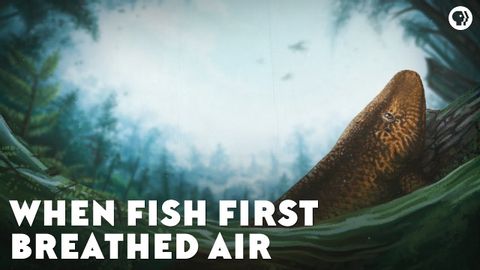When Fish First Breathed Air
joey joey が 2021 年 05 月 03 日 に投稿  この条件に一致する単語はありません
この条件に一致する単語はありませんUS /ɪˈvɛntʃuəli/
・
UK /ɪˈventʃuəli/
US /ˈpɪriəd/
・
UK /ˈpɪəriəd/
- n. (c./u.)期間 : 時代;強調;終止符;生理;授業時間 : 時限
US /ˈdɛlɪkɪt/
・
UK /'delɪkət/
- adj.繊細な ;繊細な ;敏感な;微妙な;デリケートな
US /əˈkwaɪr/
・
UK /ə'kwaɪə(r)/
エネルギーを使用
すべての単語を解除
発音・解説・フィルター機能を解除

